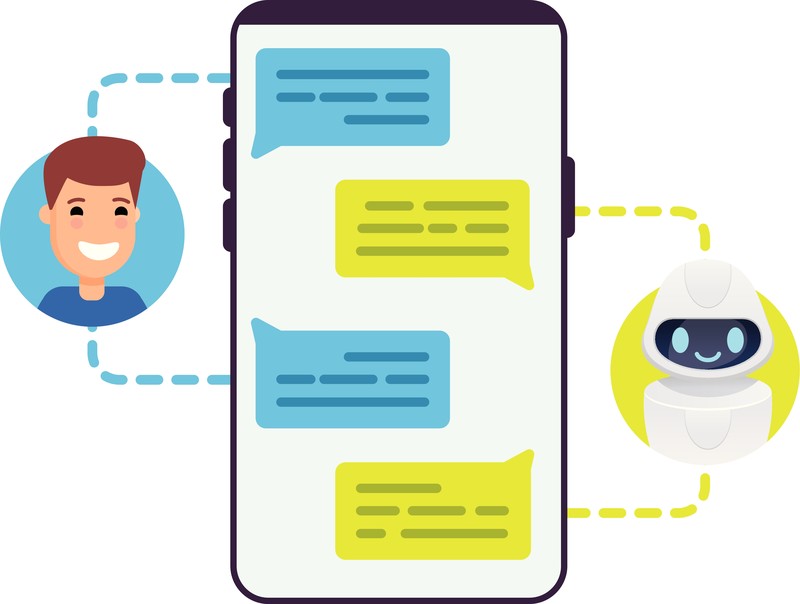What are chatbots?
So what are chatbots all about? They are a general category of programs that interact with people via messaging or speech. Speech bots are Alexa, Siri, etc. In this post I will talk about messaging chatbots. Messaging chatbots use your favorite messaging platform: Facebook, WhatsApp, Slack, Telegram, Kik, etc. The program interacts with the platform users like any regular human: by sending and receiving messages. It might also have some additional capabilities, like reserving restaurant tables, buying tickets for concerts and calling taxis.
Chatbots have been gaining in popularity among all age groups: both millennials and baby boomers use them. In 2017, the number of chatbots Facebook Messenger supports grew to 100K and the global chatbot market is expected to reach $1.23 billion by 2025.
Why are chatbots so popular?
There are several reasons for the chatbots’ growing popularity, with two being most important.
- A shift in platforms. While phone and email used to be the most popular way of contacting a business, it is no longer so. Users prefer to be able to send text messages. Getting a text message reminder about an appointment is much more convenient than a phone call: you save time, as reading is quicker than listening, and have a reminder in your phone that you can always go back to. More and more users expect a business to have messaging available.
- Spam has not reached our messaging yet, at least not in the epic proportions it has reached our email, and so far companies are determined to keep it that way. Facebook, for example, places strong guidelines on how chatbots can interact with users, and a chatbot can only contact a user if he or she wrote to the bot or subscribed to the page first.
How can chatbots help your business?
What are some ways they can help your business? There are a few. They can automate some of the business’ customer service tasks. For example, a chatbot can answer questions about the hours and location of a hair salon, and even schedule appointments. A chatbot cannot replace live customer service, to be sure, but it can automate some of the more predictable and mundane tasks.
It can also serve as a great marketing tool. Your business can send content to the user via messaging and engage him/her further. Sort of like email newsletters, but a lot better (read on).
Why is using chatbots smart?
- In customer service, chatbots can reduce costs by providing at least part of the service and requiring less live customer agents to be available.
- Audience segmentation in marketing. It is much easier to segment your audience into different types via a messaging platform than an email newsletter so that you can customize messages to different audiences. This customization can be achieved through asking the user, as well as using information the platform makes available from their profile.
- People are much more likely to open a message than an email and read through it. Click-through rates (CTR) for messaging bots are between 15 and 60%, while a 5% CTR for an email newsletter is considered quite good.
- People like talking to bots, even when they know that it’s a computer they are talking to. They will personify them and attribute human characteristics to them (known as the ELIZA effect). In other words, a chatbot is almost like their friend, who, if programmed well, will respond in a friendly and interactive way: by sending videos, emojis and stickers along with text. This is exactly what draws people to them.
How to design a good chatbot
While chatbots are coming to take over the marketing world, it is important to remember that a chatbot is still a computer program and has limitations. Making a computer program converse on the same level as a human is incredibly difficult, and that can be rectified by setting users’ expectations.
- Narrow down the scope and decide upfront what your chatbot will do. Example of good scope: a chatbot to answer questions about hours and locations and to schedule appointments. Example of bad scope: a chatbot that will replace your customer service department.
- Set the user’s expectations upfront: let the users know that they are receiving messages from a program. The interactive personification (ELIZA) effect still exists, even when the users are well aware they are talking to a bot.
- Let the user know what the bot can and cannot do and suggest some ways of interacting with it. One of the chatbots I tried out did not understand any of the messages I sent to it and had a good array of answers (such as “Huh?”), but I could not find a question it could answer with actual information. On the other hand, Slackbot does a great job with that: it suggests that it can remind you of a scheduled task, and even shows the format of the message you should use.
If the expectations are set well, and the chatbot can serve some well-defined goals, it can reduce costs for your business, better engage a more targeted audience while connecting with customers in a much more interactive way through their preferred methods of communication.
There are many free and paid platforms where you can build a chatbot for your business (this is a great overview). Platforms are a good solution if you would like to build a bot yourself with little or no coding. You might find, however, that platforms meet one set of your needs, but not others, with it being hard to find one that is exactly what you require. Thus, if you want flexible customization for your particular case it is a better idea to create the bot yourself.
If after reading this post you decide that a chatbot is something you might need, let me know at zhenya@practicallinguistics.com, and we can start a conversation about building one together.
Photo credits: Can Stock Photo / mast3r, Can Stock Photo / Leonidivanov.


